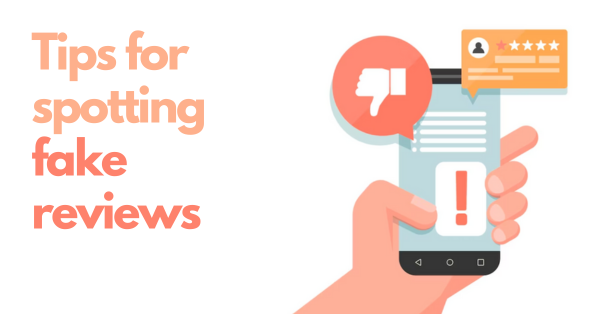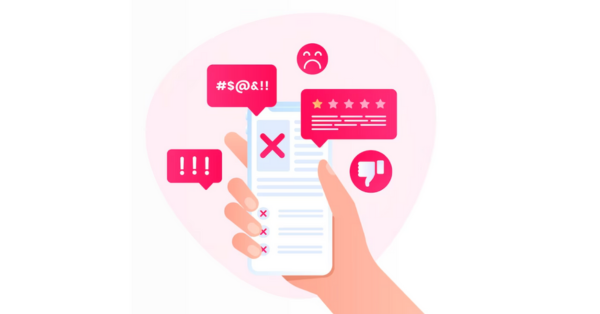Fake reviews are not easy to spot, but they are a growing problem in the eCommerce industry. They are a problem both for companies or websites that host customer reviews and as well as for customers who rely on them when making a purchase.

It’s safe to say that fake reviews are still a grey zone. Even though much has been done in terms of legislation, some companies are still trying to increase or improve their online presence by using fake reviews.
So, to have a fair-play eCommerce environment, spotting fake reviews is important both for businesses and customers.
Here are some tips that can come in handy when trying to detect a fake review.
What is considered a fake review?
Fake reviews can be any type of online review which are not genuine. Sometimes they can be posted automatically, by bots, but not rare are the cases where real people are posting fake reviews. This is usually done by creating fake emails and profiles - some people do it for money, while others do it for some kind of compensation.
When we say fake reviews, the first association is probably fake positive reviews. That’s a pretty often situation - companies would pay for fake reviews to improve their reputation and get more visibility and new customers. However, fake reviews can also be negative. Sometimes, people tend to leave fake negative reviews, pointing out negative aspects that are not necessarily true. Unfortunately, some companies try to fight competition by paying for fake negative reviews about them or their products.
Over time, this practice got so sophisticated that it became almost impossible for customers to detect it. Having trouble with separating true from false reviews complicates the process of making a purchasing decision.
So, what do customers do in these cases?
How customers can spot fake reviews?
Unfortunately, the practice of leaving fake reviews has become so popular that numerous advanced methods make spotting fake reviews extremely difficult.
However, there are some things that you can pay attention to when trying to understand whether a review is genuine or not.
-
What can be a red flag?
Even though people and bots in charge of leaving false reviews use very sophisticated techniques, it’s not unusual to find reviews whose content should be considered a red flag.
For instance, if the review is extremely vague and doesn’t contain any precise information or doesn’t have a personal touch, it is highly unlikely that it’s a genuine one. Excessive enthusiasm can also be an alarm especially if it’s about some completely mundane things.
Besides checking the content, it would be wise to pay attention to the reviewer's profile. If the account has just been created or it even uses a profile photo that is a generic one, that’s a sign to be cautious. Moreover, if the same reviewer left an identical review for other products as well, it may be a bot.
-
Don’t rely just on the star ratings
A common practice is to rely on star ratings. But, did you know that according to research from 2021, around 31% of star reviews on platforms such as Amazon and Walmart are false? That’s because it doesn’t take almost any time to leave a star review. So, looking for reviews that besides star ratings have a comment as well would be a smart thing to do.
-
Check the review period
Another sign of a false review could be a bunch of reviews left in a short period. False reviews are usually published in bulk, meaning that many of them will be published on the same day. These reviews are also very generic, without any specific information about the product or the service.
-
Try spotting fake negative reviews, too
When we think about fake reviews, the majority of us usually think of a company that is paying someone to praise them online. But, not all fake reviews are positive ones. Fake reviews can also be negative and that’s especially common in cases where other companies are trying to beat their competition by posting false, negative comments.

However, it’s not unusual that a company pays for getting a couple of negative, or semi-negative reviews. Those reviews automatically give credibility to other positive reviews making them more genuine.
-
Look for established review sources
One of the best ways for customers to be sure about the product’s quality is to look for independent product reviews. Many websites are providing such content, such as Wirecutter or CNET.
That’s a good thing for customers, but is there anything that companies can do to learn more about their online reputation?
One option is trying to check for reviews manually. However, that’s a mission impossible, especially in the case of big companies. Hence, many companies are looking for tools that can scrape reviews. These tools are completely automated and can scrape review platforms, social media, and any other website that a company requires. Besides helping with gathering those reviews, online review aggregators can also help with responding to them.
That could also be a great way of spotting false reviews and reacting timely by reporting them.
How to report fake reviews?
If customers or companies spot fake reviews, the best advice would be to report them. Once the review gets reported or flagged as inappropriate, the marketplace gets automatically notified about it and can proceed accordingly.
The process of reporting reviews may differ from marketplace to marketplace, but here are the steps for some of the most used ones:
- Amazon has a report button next to every review. Moreover, there is an option to email them directly and notify them of anything you might find suspicious
- Trustpilot has a flag symbol next to each review, so you can also report it directly
- eBay has a little different procedure - the first step is to visit the All Reviews section, and from there, check the exclamation mark next to the report you want to report.
What actions can customers take against fake reviews?
Okay, fake or inappropriate reviews can be reported, but is there anything else that can be done? Customers who decided to buy a product thanks to a review that turned out to be a fake one usually are not satisfied by only reporting such reviews.

In cases where the customers feel misled, it’s good that they know their rights. First of all, the customer is in the right to cancel or return the order. The cancelation needs to be done up to 14 days after making an order. If the order already arrived, the customer has another 14 days to return it.
The situation gets more complicated if the purchase has been done by an individual seller, but, it’s not impossible to take legal action even then.
Conclusion
Fake reviews can cause serious problems both for companies that practice them and for the customers. Companies find fake reviews very tempting because the results are visible very quickly.
However, this is not the best practice.
In addition to the fact that review platforms and Google have begun to sanction such behavior, it also does not leave good consequences for relations with customers. It is widely known that customer behavior is based on trust. Once it is broken, it is extremely difficult to restore it.
Therefore, we advise everyone, especially small businesses, to be patient. A smaller number of reviews does not have to be a problem if they are authentic.
Have you ever encountered someone leaving fake reviews about your company? Or maybe you have practiced it yourself?
Write to us in the comments.
